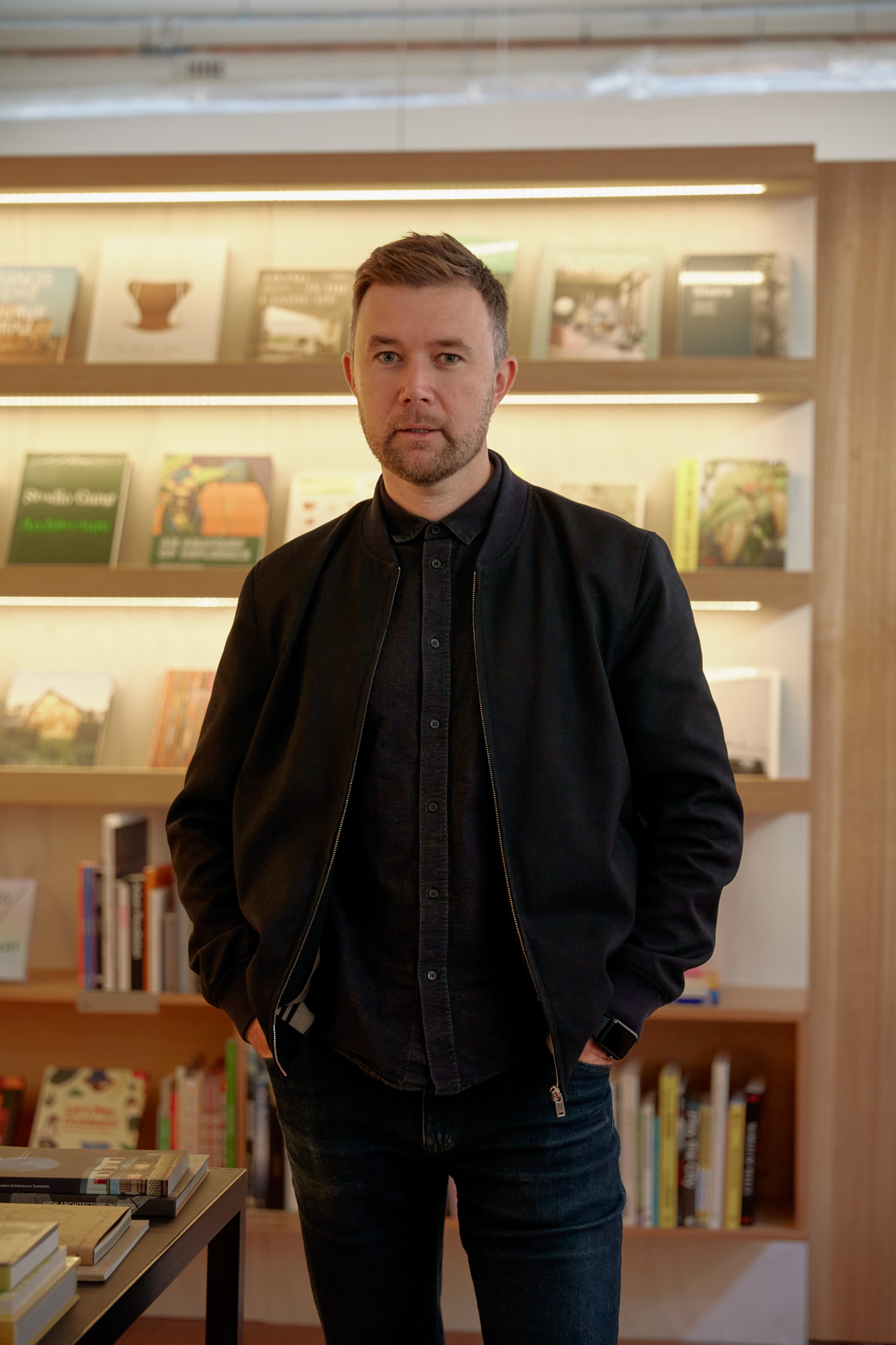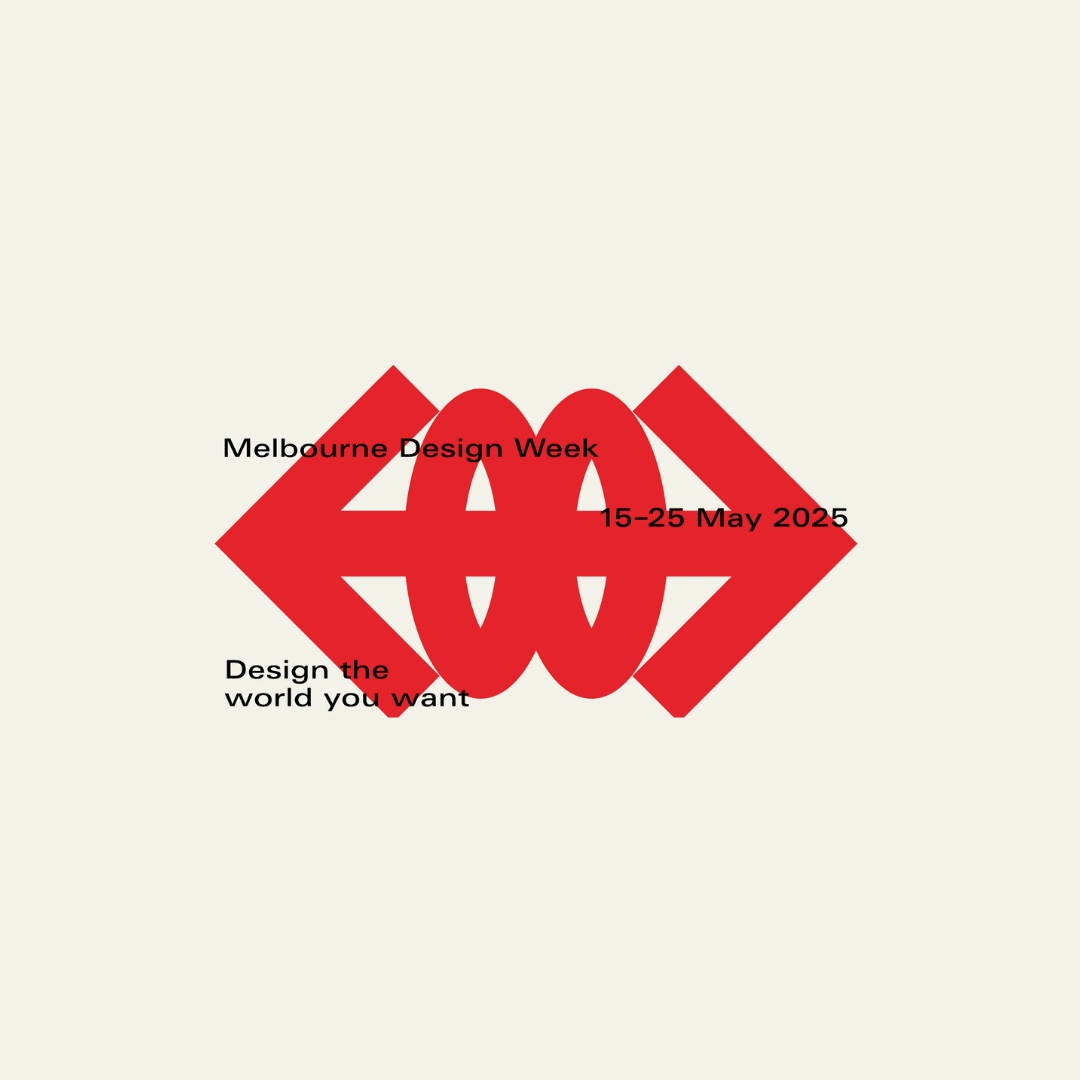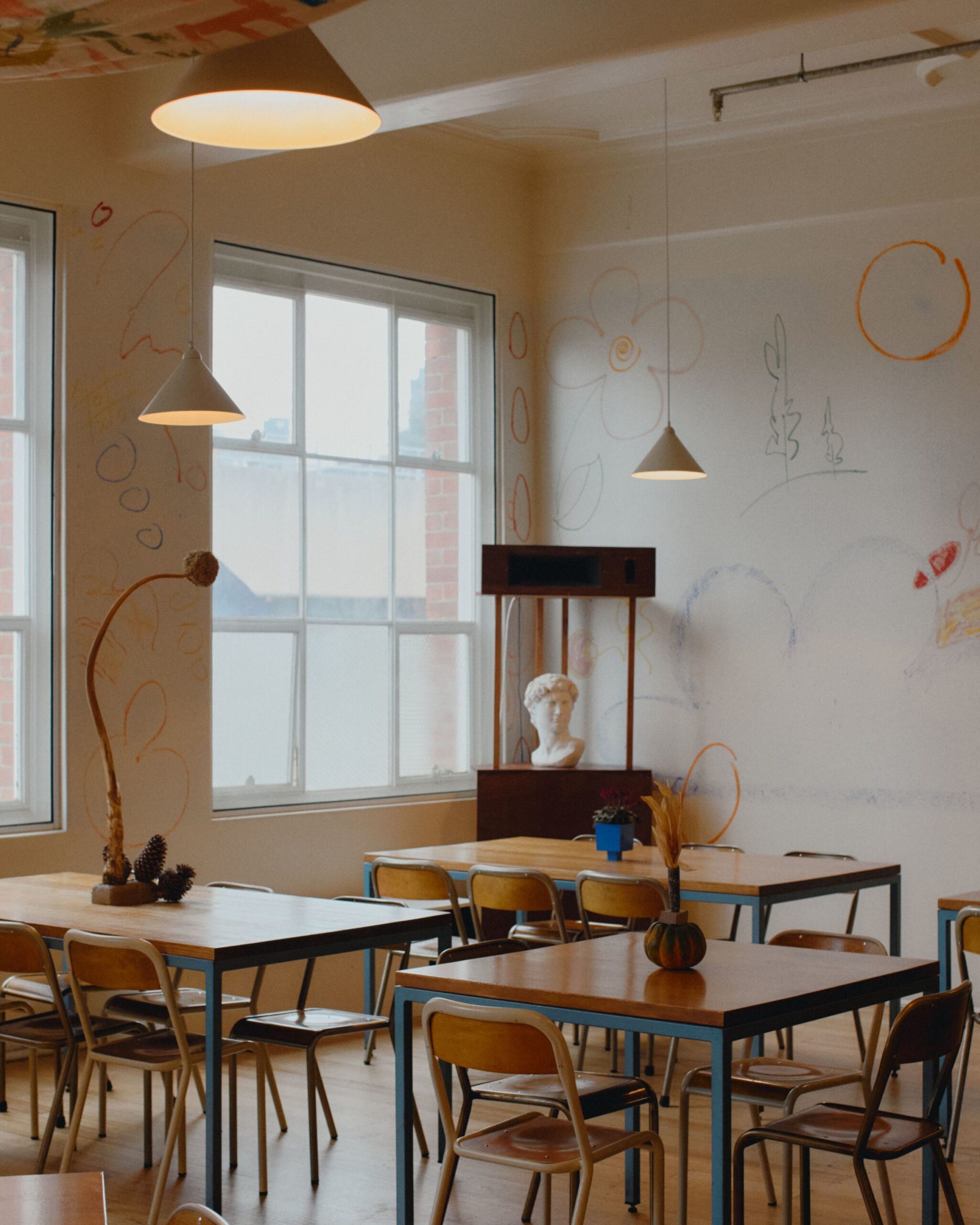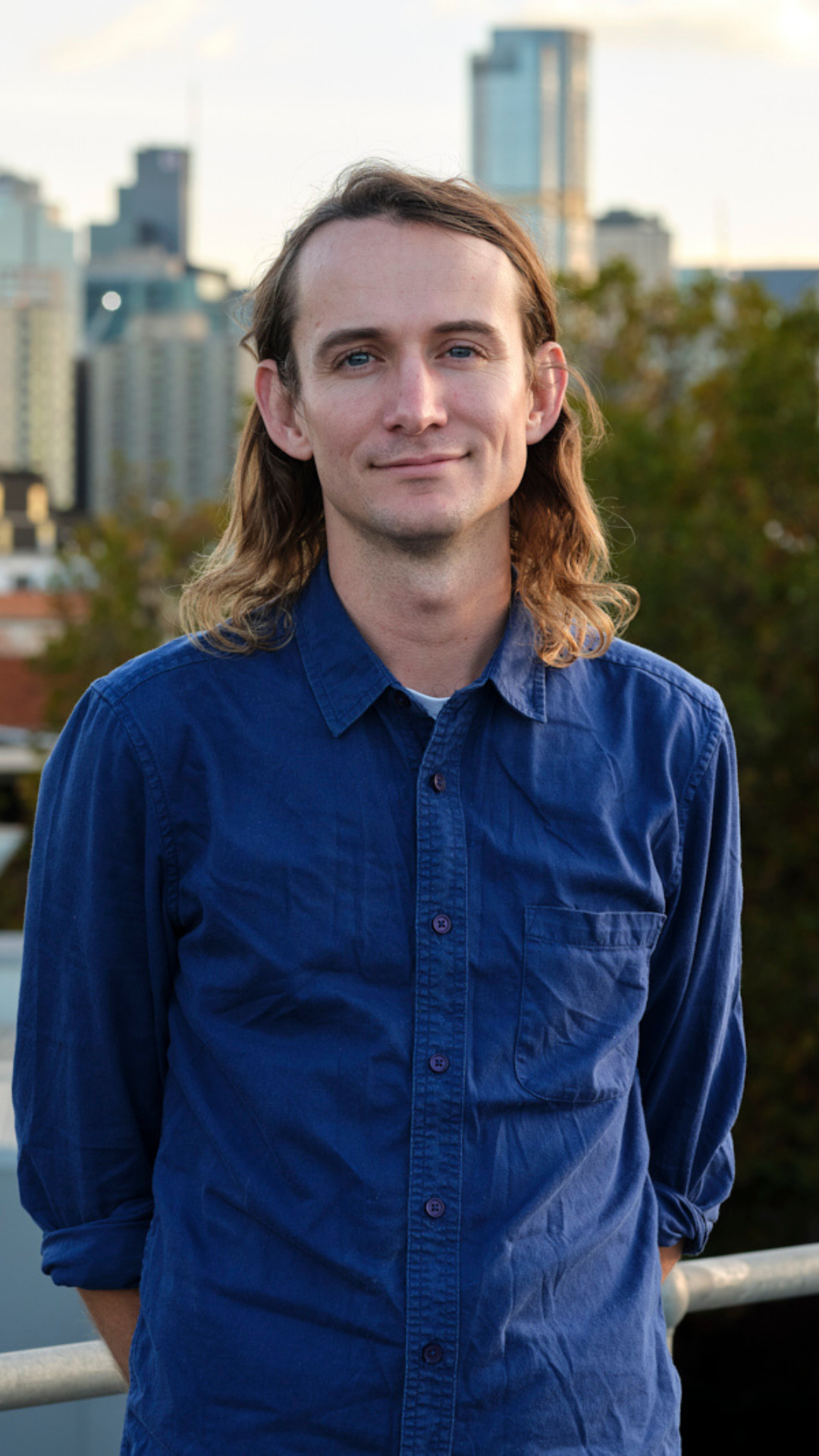In conversation with Maitiú Ward from Bookshop by Uro
Shifting perceptions

Uro Publications is an independent publisher of architecture and design books, as well as a retailer of said. Architecture and design books, more than most publications, need to be experienced in person to be properly appreciated. A lot of thought goes into crafting these books. There’s often a close connection between their physical qualities and their content – their look and feel in the hand, their sense of scale, how the reader finds their way through the pages. On a computer screen, that all tends to get a bit lost, so we feel our bookshop is a really important part of our publishing offering, and a small contribution to the culture around art and design in the built environment here in Melbourne.
Could you introduce your space?
Tucked into a corner of a hidden courtyard garden just off Johnston Street, in the heart of Collingwood, Bookshop by Uro offers a tightly curated selection of specialist art and design books from publishers around Australia and the world. Importantly, though, it gives lovers of books on art and design a dedicated space to browse in real life, rather than just virtually.
How did you start your business?
We began in 2009, with the publication of our first book The Private Life of Public Architecture, which was about the design and construction of the then-new Melbourne Convention and Exhibition Centre and more broadly about the Public Private Partnership model that building was delivered under. That book was followed by a book on the fraught history of the National Gallery of Australia and its design, Falls the Shadow, in 2012. We’ve since picked up pace, and have published more than forty books, as well as publishing websites and magazines, all generally related in some way to design in the built environment. We now publish about four to five titles a year.
Architecture and design books, more than most publications, need to be experienced in person to be properly appreciated. When Melbourne’s only architecture bookshop, Architext, closed in 2016, we decided to open a tiny architecture bookshop in Fitzroy, in a shopfront we’d been using as our office. It quickly became apparent that space wasn’t fit for purpose, so when the opportunity presented itself to potentially move into Collingwood Yards, we jumped.
What does a typical work day look like?
Our publishing work, which mostly involves a lot of screen and phone time, takes place behind the shelves. We have our office at the back of the shop. The bookshop itself opens its doors at 10am Tuesdays through Fridays, until 6pm. We’re also open Saturdays from 11am till 4pm.
Our publishing team doesn’t spend a lot of time in the shop, but we love talking books with customers when we get a chance, and those of other, like-minded publishers. The bookshop is a great intellectual resource from that perspective. We get inspired by seeing what others are up to, and sharing discoveries and knowledge with visitors.
Are there any all time favourites that you could share with us?
Ideas are what drew us to publishing, but being design publishers we also believe the artefact of the book itself is a powerful means of shifting perceptions and aiding in understanding. We work hard with our own publications to refine the relationships between image, text and format, so we tend to be drawn to books that do this well and are likewise ideas-driven, or propositional in some way. A few highlights from the past few years might include The Living Surface: An alternative biology book on stains, We Sit Together: Utopian Benches from the Shakers to the Separatists of Zoar, Shelter Cookbook (actually, pretty much anything published by Spector). A special mention also has to go out to Lo-TEK: Design by Radical Indigenism, which is both a phenomenal bit of design-driven, visually rich anthropological research and a radical proposition for re-framing how we design and build our cities in relation to the environment. It was written and developed by Julia Watson, an Australian landscape architect now based in the US.
Any upcoming events or launches that you are excited about?
A bookshop is primarily a place for the exchange of ideas, and our hope was always that it would be a home for regular events, exhibitions and discussion, particularly in the architecture, design and urbanism space. Because of the pandemic, that can’t happen right now in quite the same way we’d originally envisioned it, but we’re hoping we’ll be able to announce a program of talks and launches for November and the new year very soon.








